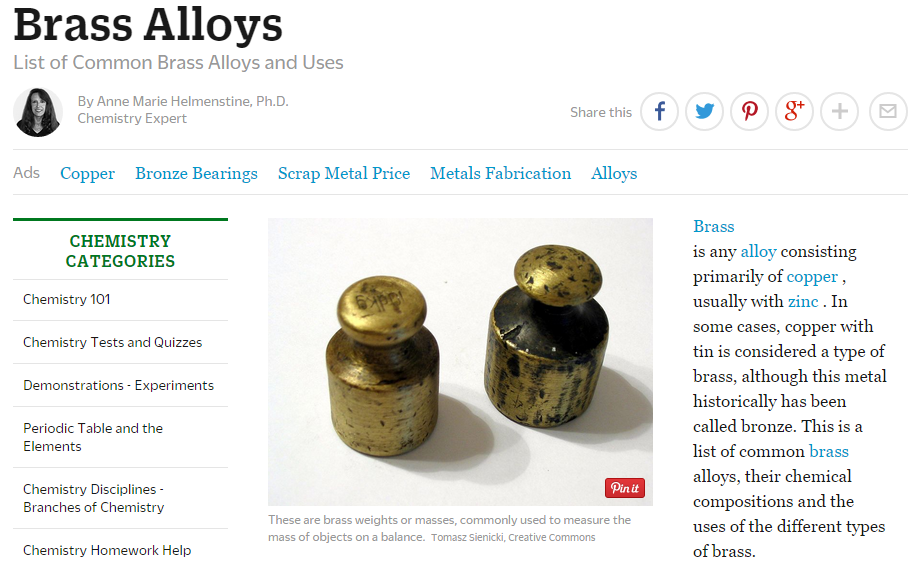Metals were originally pure elements. When early humans discovered that mixing metals through melting produced stronger, more durable, and corrosion-resistant materials, alloying became a practice. Two of the most commonly alloyed metals are copper and zinc, the combination of which produces brass.
Brass is used extensively in various industries due to its desirable properties. It is malleable, low friction, and non-ferromagnetic. However, there are many types of brass available to various users, each type having unique levels of this metal’s properties.
Basic brass has a copper to zinc proportion of 67% to 33%. Other brass alloys may be the result of variations in the copper to zinc proportion, or may contain additional metals.
In an article for About.com, chemistry expert Anne Marie Helmenstine discusses the different alloys of brass and their applications. Here are three of the most common types:
Aich’s alloy – 60.66% copper, 36.58% zinc, 1.02% tin, and 1.74% iron. Corrosion resistance, hardness and toughness make it useful for marine applications.
Alpha brass – Less than 35% zinc, malleable, can be worked cold, used in pressing, forging, or similar applications. Alpha brasses have only one phase, with face-centered cubic crystal structure.
Prince’s metal or Prince Rupert’s metal – alpha brass containing 75% copper and 25% zinc. Named for Prince Rupert of the Rhine and used to imitate gold.
Despite adding other elements like tin and iron, the resulting alloy is still considered brass because it’s predominantly copper and zinc. As may be seen from the information in the article, an addition of a certain metal can alter the product’s properties, and consequently, its application.
The small amount of iron added to Aich’s alloy, for example, adds to the material’s overall strength or hardness. The addition of tin, on the other hand, makes this brass alloy more corrosion resistant.
Careful analysis of the properties of a brass alloy’s metal composition is crucial in finding the right material for a specific use. Taking Aich’s alloy again as example, its hardness, toughness, and water resistance make it ideal for underwater applications, and those which can result to saltwater exposure. Reliable brass manufacturers follow the standards formulated by the American Society for Testing and Materials (ASTM) in producing brass sheet metal and tubes, to ensure uniformity of the desired properties in all their products.
When looking for dependable brass suppliers for your specific needs, therefore, check to make sure that the products conform to ASTM standards.. Leading suppliers like Rotax Metals have adequate inventories of high quality brass products that can be safely and efficiently used for your specific needs.
(Source: Brass Alloys, About.com)


